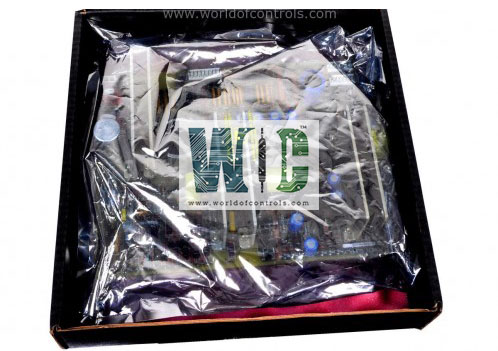SPECIFICATIONS
Part No.: IS200TDBSHGABC
Manufacturer: General Electric
Country of Manufacture: United States of America (USA)
Size: 17.8 cm wide x 33.02 cm high
Input filter: Hardware filter, 4 ms
Max response time on 25 ms typical
Max response time off 25 ms typical
Contact material Silver cad-oxide
Contact life Electrical operations: 100,000
Contact life Mechanical operations: 10,000,000
Temperature: -30 to + 65oC
Technology: Surface-mount
Number of relay channels 12 relays
Product Type: Simplex Discrete I/O Terminal Board
Availability: In Stock
Series: Mark VIe
Functional Description
IS200TDBSHGABC is a Simplex Discrete I/O Terminal Board developed by GE. It is a part of Mark VIe control system.The Simplex Discrete Input/Output terminal board stands as a specialized simplex contact input/output interface, designed for adaptable mounting configurations on DIN-rails or flat surfaces. Offering robust functionality, the TDBS board accommodates 24 group isolated contact inputs, accepting nominal wetting voltages of 24, 48, or 125 V DC from external sources. Each contact input is fortified with noise suppression capabilities, providing robust protection against surge and high-frequency interference.
Relay Outputs and Option Card Expansion
- Isolated Contact Inputs: TDBS integrates 24 group isolated contact inputs, facilitating versatile connectivity with external sources, delivering adaptability and reliability in signal reception.
- Voltage Options: Supporting nominal wetting voltages of 24, 48, or 125 V DC, these inputs are configured to cater to various voltage specifications, ensuring compatibility with different external sources.
- Noise Suppression: Incorporating noise suppression technology, the contact inputs are shielded against surge and high-frequency noise, guaranteeing stable and accurate signal processing.
Relay Outputs and Option Card Compatibility
- Form-C Relay Outputs: Providing 12 form-C relay outputs, the TDBS terminal board offers versatile functionality, enabling diverse relay operations essential for control and signaling purposes.
- Option Card Expansion: The TDBS facilitates the integration of various option cards, empowering users to expand and customize relay functions as per specific operational needs and requirements. This feature enhances the versatility and adaptability of the terminal board, providing tailored solutions for diverse applications.
- Integration with Mark VIe Systems
Within the Mark VIe systems, the PDIO I/O pack collaborates seamlessly with the board. The I/O pack interfaces via the D-type connector, establishing communication with the controller over Ethernet. A singular connection point is provided for the PDIO, offering the flexibility of one or two network connections from PDIO to the controllers, ensuring efficient and streamlined communication pathways within the system architecture.
Installation
- The installation process for the TDBS terminal board involves several steps to ensure secure mounting and efficient connectivity:
- Mounting Configurations: Accompanied by a plastic insulator, can be mounted using two primary methods.
- DIN Rail Mounting: The board with its insulator mounts onto a sheet metal carrier, specifically designed to secure onto a DIN rail. This method offers a convenient and standardized mounting solution for streamlined installation.
- Cabinet Mounting Option: Alternatively, along with its insulator, can be mounted on a sheet metal assembly that is bolted within a cabinet. This method provides flexibility, especially for specific cabinet-based installations, ensuring secure placement and accessibility.
- Wiring Connections: The connections from the terminal board are wired directly to two distinct sets of 48-point terminal blocks:
- Terminal Block Connections:
- Upper Set (TB1): This set of terminals, TB1, facilitates connections to the relay section of the board. Wires, typically of #18 AWG gauge, are used for these connections, ensuring efficient relay functionality.
- Lower Set (TB2): The lower set of terminals, TB2, establishes connections to the contact input circuits. Similar to TB1, these connections are wired using #18 AWG wires, allowing for reliable contact input circuitry operation.
- Shield Termination: Shields associated with the connections should be carefully terminated on a separate bracket. This segregation of shield terminations ensures proper grounding and minimizes interference, guaranteeing optimal signal integrity and system reliability. This meticulous installation process, whether on a DIN rail or within a cabinet assembly, ensures secure mounting and organized wiring connections for the TDBS terminal board, providing a robust foundation for reliable operation within industrial settings.
The WOC team is always available to help you with your Mark VIe requirements. For more information, please contact WOC.
Frequently Asked Questions
What is IS200TDBSHGABC?
It is a Simplex Discrete I/O Terminal Board developed by GE under the Mark VIe series.
What happens if the contact input wetting voltage drops below normal levels?
If the wetting voltage drops below 40 percent of the nominal voltage, a diagnostic alarm (fault) is triggered and latched, indicating a potential issue that requires attention.
How does TDBS provide diagnostic feedback regarding relay states to PDIO?
It offers diagnostic feedback to PDIO by monitoring an isolated set of contacts on each relay and providing status updates for each relay connected to the board.
How does the board utilize isolated voltage feedback when used with WROG and PDIO?
With WROG, isolated voltage feedback is employed through PDIO to monitor each fuse. A diagnostic is triggered if voltage is present and the fuse is open, alerting users to potential issues.
What role does the terminal board connector's ID device play in system integrity?
The terminal board connector houses an ID device, containing crucial information like the board's serial number, type, and revision. Similarly, relay option cards possess their unique IDs. Any mismatch between these IDs and the system leads to a hardware incompatibility fault, ensuring system integrity by identifying mismatches promptly.
